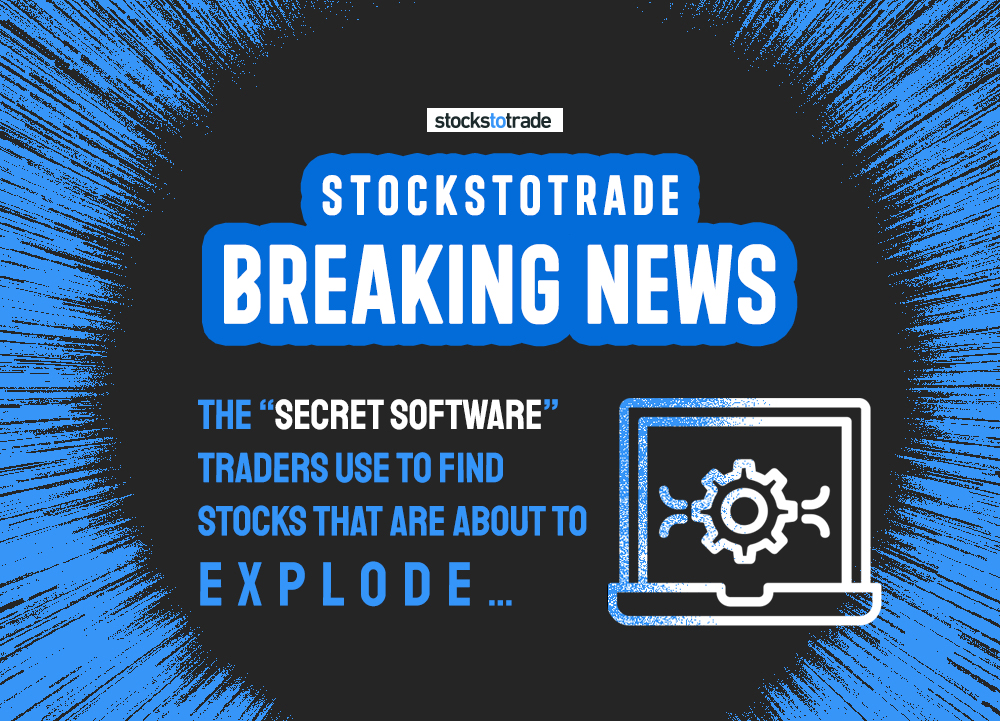In the age of the Reddit-engineered short squeeze, during a week when a highly-shorted stock has run as much as 176 percent, identifying trading targets with high short interest has the potential to be more valuable than ever.
According to MarketWatch, the following are the five most shorted stocks in the entire market, based upon the short percentage of the total available float.
Let’s take a closer look at what they do, and why short-sellers are so bearish on them.
Table of Contents
1. Root Inc. (Symbol: ROOT, Short Interest: 54%)
What They Do
Root Inc. offers a 21st century spin on car insurance to drivers in 30 states.
Unlike legacy auto insurers, who use credit scores and other controversial demographics to derive a monthly premium amount, Root requires drivers to download their mobile app and allow proprietary software to monitor their driving for several weeks before joining the service.
Root believes this allows them to offer premiums that more accurately reflect the quality of the customer’s driving, rather than other less pertinent factors utilized by their competitors.
Furthering their reputation as a sort of next-generation auto plan, Root recently became the first company to offer discounts for Tesla owners who engage Autosteer, an Autopilot feature that keeps the vehicle in its lane even when approaching curves.
Why They’re Shorted
Those most bearish on Root have implied that the company is nothing more than an elaborate insurance scam.
Deep web short-selling analyst Edwin Dorsey of The Bear Cave recently uncovered a slew of consumer complaints detailing unfair rate-raising practices, seemingly coordinated by Root at the expense of their customer base.
Furthermore, the report claims that Root was simultaneously bragging on an earnings call about taking “base rates down” in Texas, Root’s largest market and the epicenter of the complaints.
Such practices have led to decreased revenue and client turnover, which Dorsey believes could be another nail-in-the-coffin for Root, opining that “if new technology doesn’t eliminate Root, losses and churn might. Roughly two out of three of Root’s customers leave every year and they lost $363 million [in 2020.]”
But Citron Research’s Andrew Left thinks these complaints are over-emphasized, extolling that “highlighting customer complaints is just reaching.”
Left arrived at a neutral-to-positive conclusion on the company, within which he discusses how “the original bear argument was centered around ROOT’s high loss ratios vs. competitors.”
“However, ROOT disproved the bear case with additional disclosure in the company’s Q4 2020 shareholder letter,” where they highlighted the fact that their loss ratios were higher than their peers due to their exceedingly young customer base which will inevitably age and diversify over time.
2. Forte Biosciences Inc. (Symbol: FBRX, Short Interest: 52%)
What They Do
Forte Biosciences is a clinical-stage biopharmaceutical company whose lead product, FB-401, is a topically applied live biotherapeutic for the treatment of the inflammatory skin disease atopic dermatitis (AD).
AD is a chronic and incurable skin condition that manifests itself through xerosis (dry skin), erythematous crusted eruptions (redness of the skin), lichenification (thick or leathery skin), impaired skin barriers (causing the skin to irritate more easily), and intense pruritus flares (red and itchy rashes.)
Without going into any further detail, you can imagine that this is an uncomfortable and depressing disease to live with.
If Forte’s estimate, that AD afflicts up to 30 percent of children and up to 10 percent of adults, is anywhere near accurate, then the total addressable market (TAM) for a definitive cure is positively enormous.
Why They’re Shorted
Two words: zero revenue.
It’s that simple, FBRX has posted back-to-back full-year revenues of exactly zero dollars, and while this is not entirely atypical for a clinical-stage biotechnology company, it certainly doesn’t seem to justify a $552 million market capitalization.
The cash flow picture is predictably bleak, as their Form 10-K for fiscal 2020 shows they had $58,765 in cash and cash equivalents going into the first quarter, while simultaneously increasing losses related to operating expenses by a multiple of ten between 2019 and 2020.
No easily accessible short reports appear to exist on the company, so we have to assume the prevailing bear thesis for Forte is one based primarily around a lack of cash flow and an unsustainable capital burn rate.
If FB-401 doesn’t win FDA approval sooner rather than later, how will Forte keep the lights on?
FBRX shares do, however, boast 62 percent institutional ownership, indicating that a considerable amount of “smart money” believes the stock is undervalued and that any cash flow concerns are half-baked.
Additionally, Citigroup recently initiated coverage on the stock with a buy rating and a $75 price target — representing a whopping 98 percent premium on the current share price of $37.92.
This makes the utterly gargantuan short interest somewhat confounding, but ultimately, it seems the fundamental earnings narrative is simply too negative to buck the bears.
3. AeroCentury Corp. (Symbol: ACY, Short Interest: 49%)
What They Do
AeroCentury Corp offers leasing and finance services to the airline industry, specializing in renting turboprop jet aircraft and engines to foreign and domestic regional airlines.
Their principal business objective is to acquire planes and manage those assets to provide a return on investment through lease revenue and, eventually, sale proceeds.
AeroCentury strives to achieve this objective by reinvesting cash flow from operations and using short-term and long-term debt and/or equity financing.
Their aircraft portfolio currently consists of eight planes spread over four different aircraft types.
Why They’re Shorted
They’re bankrupt.
On Monday of this week, AeroCentury officially announced plans to enter Chapter 11 bankruptcy proceedings in a last-gasp effort to secure access to business funds necessary for their restructuring process, and after filing a petition to do so last month.
The company cites unfavorable economic conditions for the travel industry related to the COVID-19 pandemic as the primary reason for their failures.
But a more inquisitive look reveals that AeroCentury’s troubles started earlier, back in 2019, when they defaulted on several provisions of their credit facility.
This began a snowball effect, and in September of 2020, AeroCentury reported that its debt of $125 million dwarfed assets of $121 million.
However, last December, echoing contradictory retail-driven gains in similarly bankrupt companies like Hertz and Sears, ACY stock made an explosive move to the upside, from $2.36 to $38.04.
Today, the share price remains on a volatile roller coaster, signaling the possibility of similar trading opportunities in the name moving forward.
4. PubMatic Inc. (Symbol: PUBM, Short Interest: 45%)
What They Do
PubMatic’s mission statement is to “fuel the endless potential of internet content creators,” and to accomplish this the company develops and implements online advertising software for the digital publishing and advertising industries.
Specifically, their software allows real-time transactions to occur within targeted online advertisements. For example, you may see an ad for a service with an embedded button to one-click purchase an item, and it very well may be PubMatic’s infrastructure that drives said button.
Additionally, PubMatic guarantees that they provide superior monetization compared to their peers and “increase publisher revenue, advertiser return on investment, and marketplace liquidity, while improving the cost-efficiency” of their platform and business.
Why They’re Shorted
PubMatic reported Q4 2020 revenue of $56.2 million, and while this represents a 64 percent year-over-year increase, it is still wildly disconnected from the company’s staggering $2.7 billion market capitalization.
While there exists a curious lack of short reports available online, surely, PubMatic bears see the 50x multiple and overall price-to-earnings comparison as an enormous stretch, even in the current era of unprecedented multiple expansion traders find themselves in.
The share price is contextual as well, as the pandemic promulgated the narrative that online ad businesses were the companies du jour, driving retail speculation and ballooning the valuations to astronomical levels throughout fiscal 2020.
Furthermore, observant retail bears point to a lack of proprietary tech as well as impending headwinds for the company related to Apple’s recent IDFA (“ID for Advertisers”) privacy update. The update is expected to “upend the digital ad industry” by changing the protocols through which advertisers are permitted to target users.
But more than any of these individual hurdles, the prevailing PubMatic short thesis seems to be based primarily on fundamental overvaluation. It is the only stock on this list up a significant amount year-to-date, currently trading a whopping 97 percent higher than it traded for at the start of the year.
5. OnTrak Inc. (Symbol: OTRK, Short Interest: 40%)
What They Do
According to OnTrak’s website, the company “helps those with untreated behavioral health conditions that worsen chronic medical diseases by changing their behavior to reduce health and medical expenses.”
To clarify this, OnTrak provides “care coaches” who are individually assigned to clients with unique medical needs. They regularly call and check in on these patients, working to improve their lives and medical care.
Their “about” page features adoring testimonials from surnameless, faceless customers heaping praise on the company’s outreach to customers.
Like a client named “Kay,” who gushes: “I like most that you keep up with me so much. Call, ask questions, stay in touch, care about my life.”
Why They’re Shorted
In a widely circulated short report, Culper Research provided a scathing critique of nearly every aspect of OnTrak’s business and its C-suite.
The veritable dossier opens with a quotation from CEO Terren Peizer which reads:
“Jordan Belfort…The Wolf of Wall Street. He was a kitten…I’m a pussy cat.”
Within the first paragraph, Culper alleges that this self-proclaimed docile feline is, in fact, a “long-time criminal associate and stock promoter” who has “made numerous false and misleading statements spanning the Company’s customers, products, business practices, and financial metrics,” adding finally that the “shares are worthless.”
If that wasn’t enough, they allege that OnTrak’s purported biggest client, United Healthcare, “has never paid [OnTrak] a dime” and that the deal was “created out of thin air.”
If you go ahead and read this stem-winding report, you will notice that it refers to the company as “Catasys” as opposed to “OnTrak.” This is because Peizer recently changed the name of the company to try to distance OnTrak from the damning report and re-brand anew, a practice for which Culper alleges Peizer is a serial offender and has done it countless times at prior companies, albeit unsuccessfully.
Furthermore, there’s an unsettling vaguery to the available information about OnTrak that is rather perplexing, and the fact that their primary business involves “staying in touch” and “caring about the lives” of a sick and needy customer base appears to short-sellers to be questionable at best, and exploitative at worst.
So What?
From overvaluation to management with chequered pasts to flat-out bankruptcy, we can see that there are nearly infinite gradations along the continuum of justifications for short-selling a stock.
But why even highlight these beleaguered corporations?
For one, if you find yourself needing more bearish exposure in your portfolio, traders could take the path of least resistance and consider selling some of these names short.
On the other hand, that can be dangerous, and if you can time them correctly, short squeezes have engendered some of the most stellar long trades of the year across the entire stock market.
Whatever side of the trade you find yourself on, be extra cautious with these names, as any sliver of news, bullish or bearish, could put the share price on an exaggerated trajectory in either direction.
Image: Leremy/Shutterstock.com

